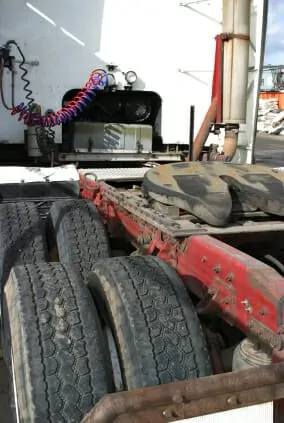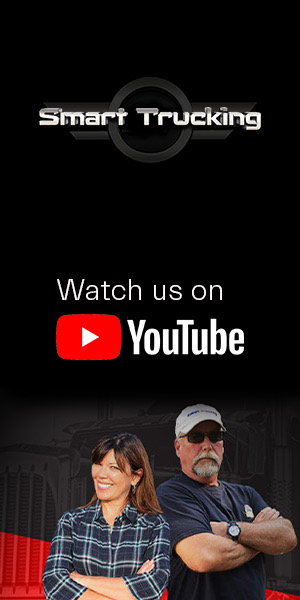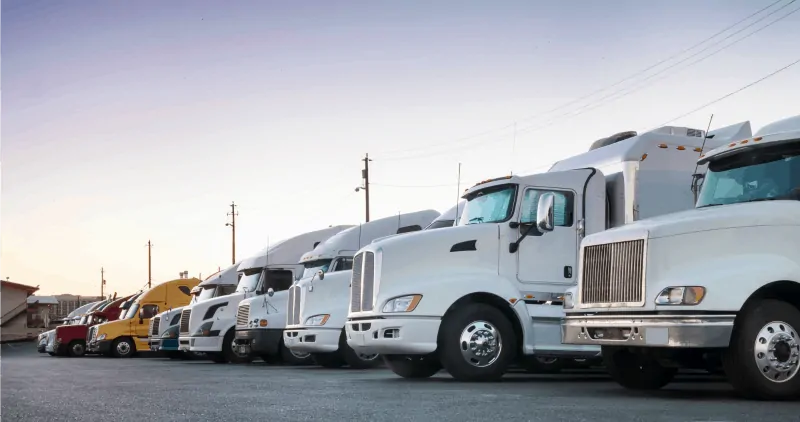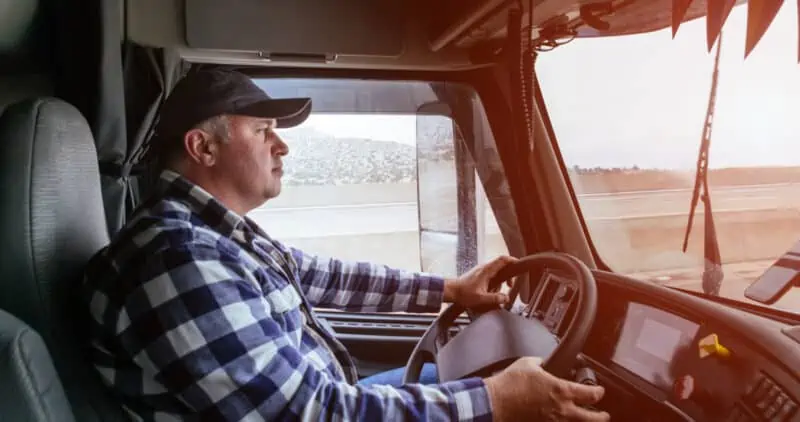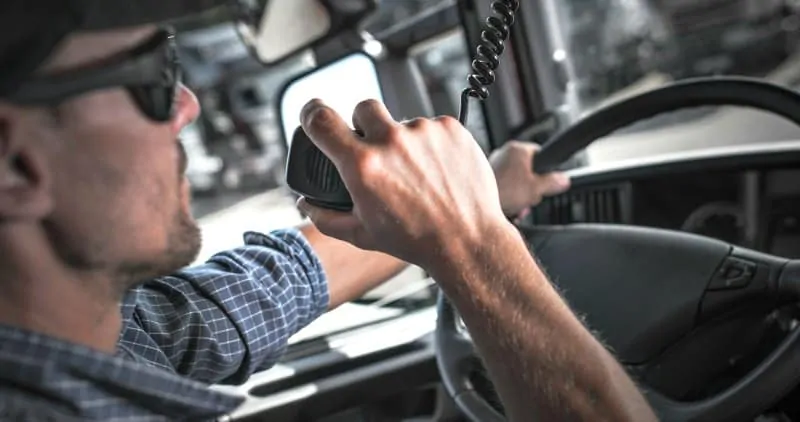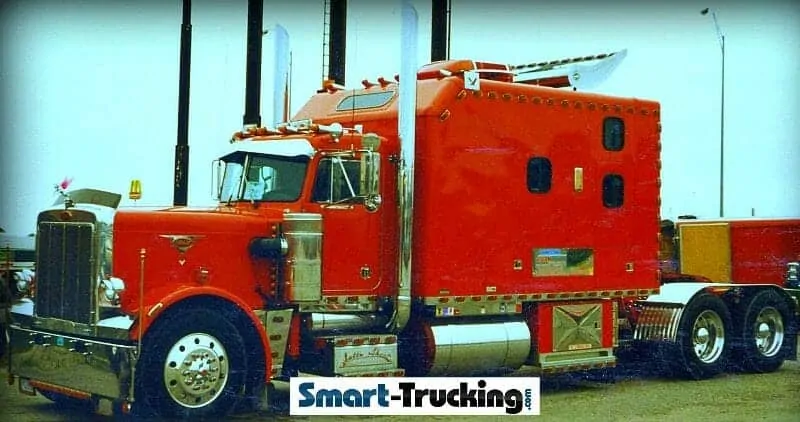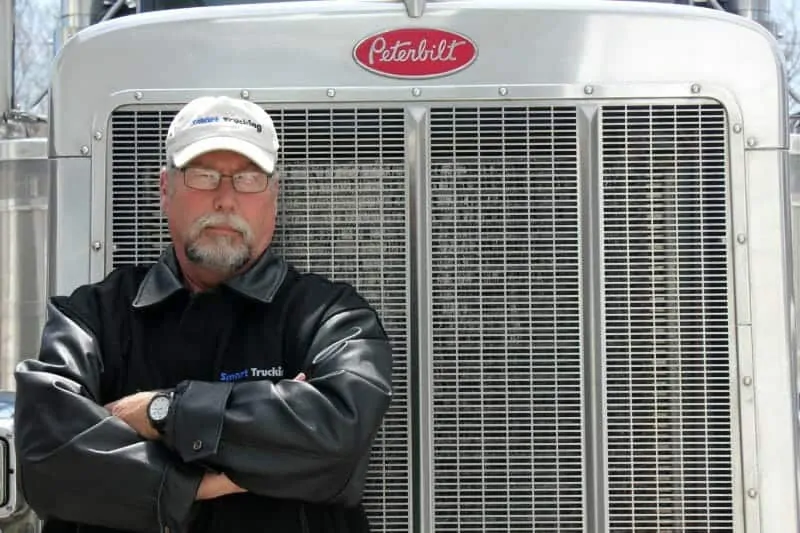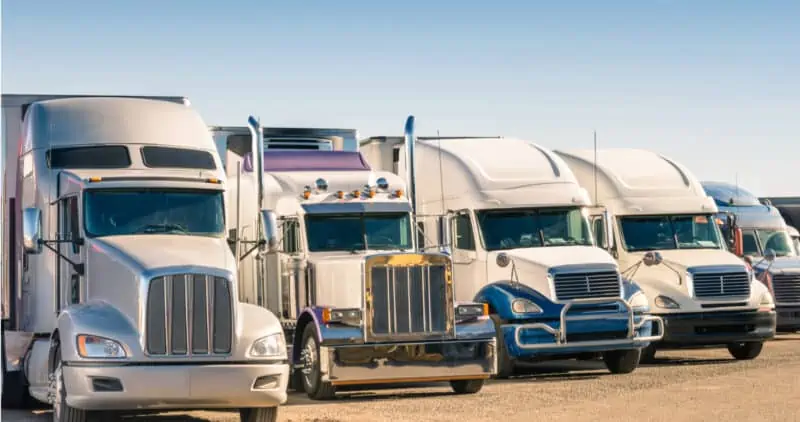Step by step instruction to set up axle weights on a semi truck.
I’ll cover the way I do it as well as why I do it this particular way.
This method has worked well for me over the past 40 years of my driving career.
We’ll look at a 5 axle truck grossing 78,000 lbs. This example is for a tight tandem trailer axle, rather than a spread axle trailer.
In the U.S., this 5 axle truck cannot exceed 34,000 lbs on a tandem axle group or 12,000 lb on the steering axle.
The maximum gross weight of this truck in most states is 80,000 lbs.
Setting Up Axle Weights
- Scale the truck on a CAT scale to find out where the weight is presently distributed and on which axle group. After scaling, let’s say that while the gross weight is ok at 78,000 lbs, the trailer axles are scaling at 34,600 lbs, which is 600 lbs. over allowable weight. I start with making my trailer axles legal weight, and as close to the 34,000 lb maximum, as possible without exceeding or going over that weight.
- Set the trailer brakes and dump the air suspension.
- Release the locking pins on the slider for the trailer axles.
Most trailers move about 400 lbs. per hole on the slider rails.
Since I need to move 600 lbs, that would mean 1.5 holes. We round up from 1.5 to 2 holes, and therefore, slide the axle over 2 holes.
To reduce the weight on those axles, pull the trailer box ahead, moving the trailer axles further toward the rear of the box.
Mark the hole on the slider rail that you need to hit and look at the distance you need to pull the box ahead.
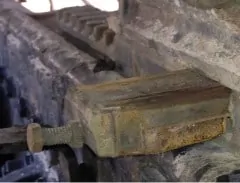
- Hop in the tractor, release the tractor brakes and slowly pull the box ahead the same distance. Then, set the tractor brake and hop out to inspect where the recessed pins are in relation to the hole.
- Set the pins so they will pop out when they hit the desired hole and gently move the box forward or back as needed until the pins pop out and lock in the desired hole. The trailer axle is now where it needs to be.
- The next thing I do is to legalize the weight on the steering axle to as close to 12000 lbs as I can get it, without going over. This means sliding the fifth wheel.

Most fifth wheel slider rails move roughly 100 lbs. for every tooth or cog on the rail. Let’s say when you initially scaled that the steering axle weighted 11,500 lbs. To load that steering axle, we need to slide the fifth wheel ahead 5 cogs.
- Lower the trailer landing gear until it begins to take the weight off the fifth wheel.
- With trailer brakes still set, release the fifth wheel , visually check to ensure both pins, one on each side, popped out and then slowly back the tractor unit up so that it moves closer to the trailer. Back up the desired distance to move the fifth wheel ahead 5 cogs, set the brakes and hop out to ensure the fifth wheel is where it needs to be, 5 cogs ahead of its former position. If so, hop in the truck and set the fifth wheel pins to lock and gently move the truck slightly back an forth to set the pins.
- Hop out and ensure the fifth wheel pins have fully retracted and the fifth wheel is locked in place. Then retract the landing gear.
We now have the trailer axles at 34,000 lbs and the steering axle at 12,000 lbs. That leaves our drive axles at 32,000 lbs, with 2000 lbs left to spare.
That extra 2000 lb we have to play with, can be used to add more diesel to the fuel tanks, that sit close to the drives.
At 7 lb per gallon (diesel weight), 2000 lbs gives us room for roughly 285 more gallons of fuel more than most trucks can even carry.
Now the axle weights are legal for running in the U.S. with a 5 axle configuration.
Remember to re-inflate your trailer air then head back to the CAT scale, in order to check your adjustments before heading out on the road.
